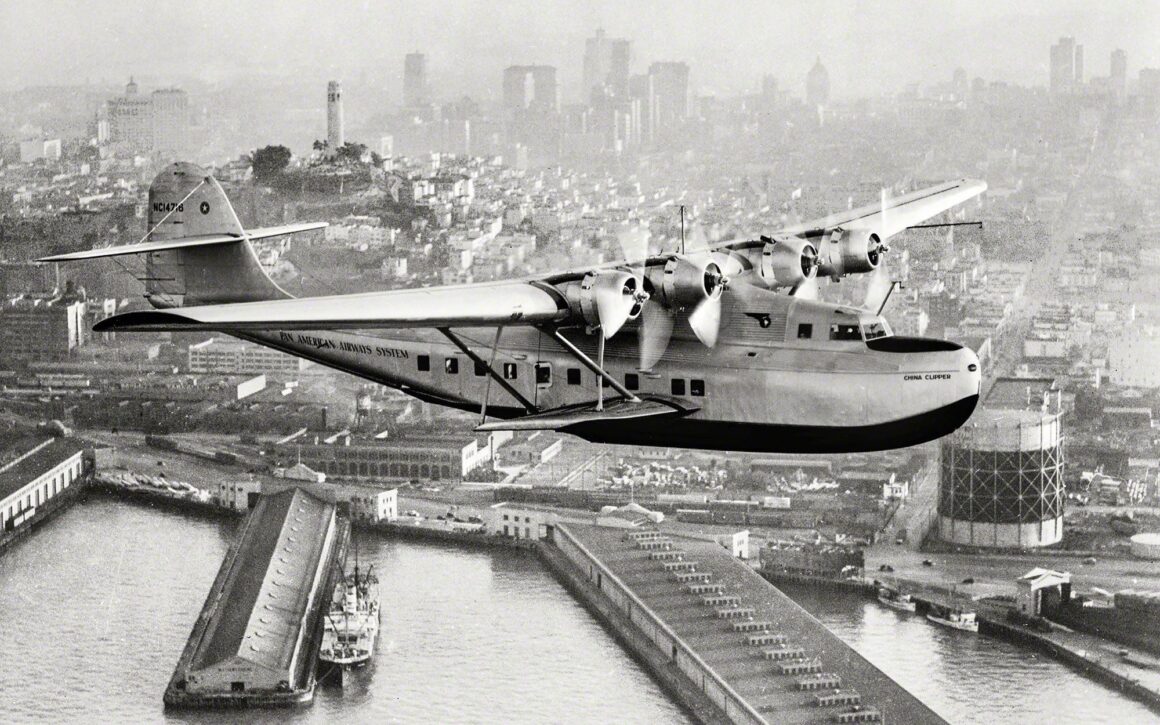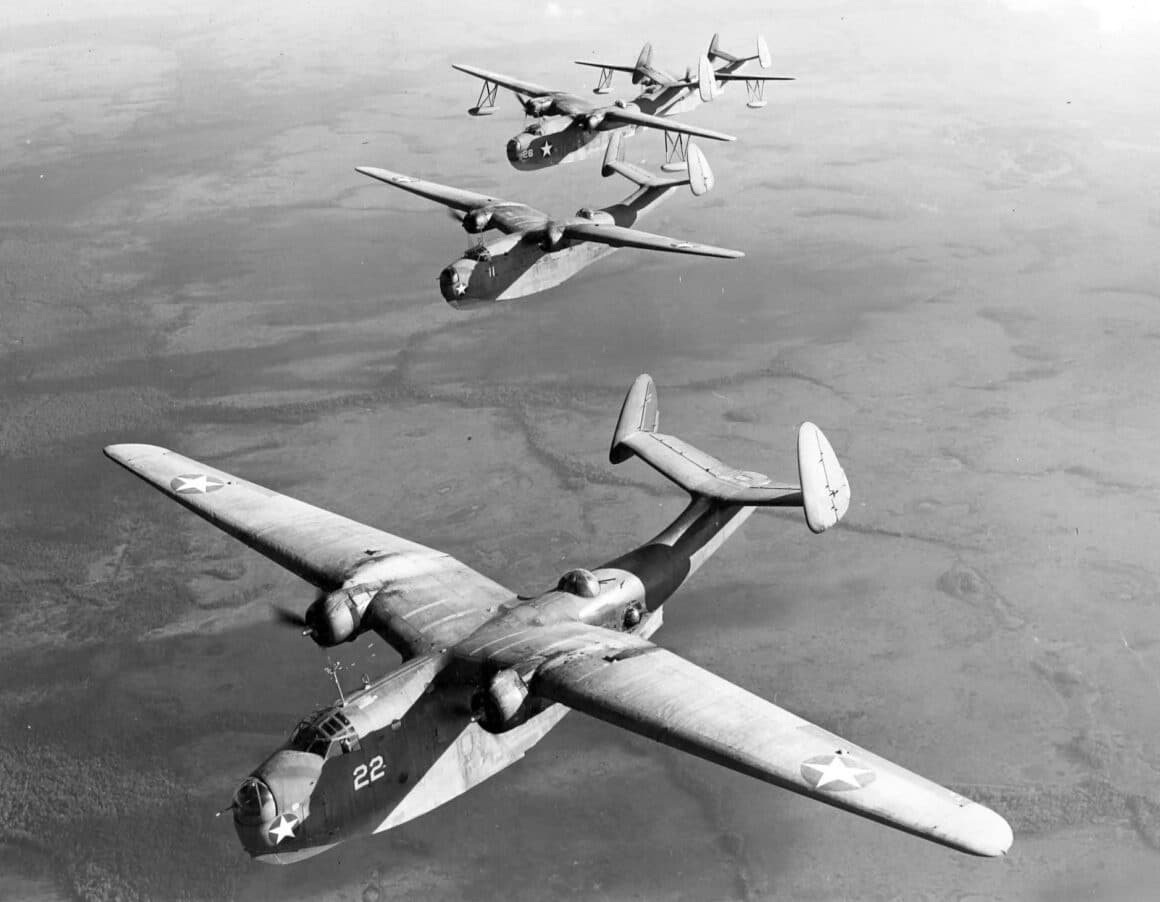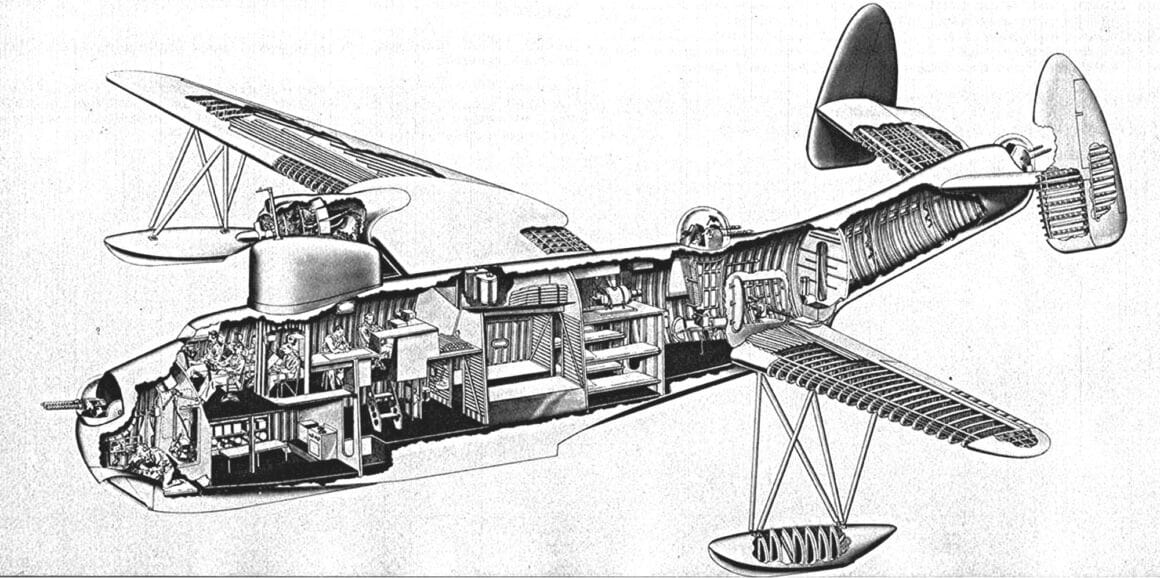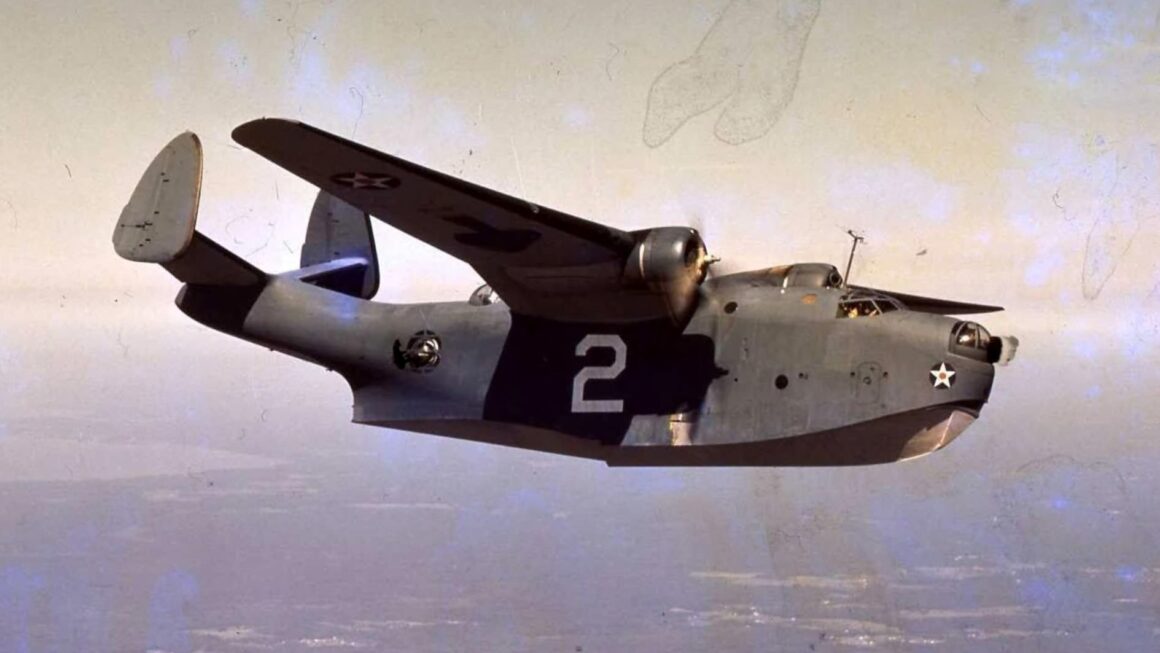Mariners Served With Distinction Around the World for More Than Twenty Years
In 1937, when the designers at Glenn L Martin Company penned the Model 162, they leveraged their experience with several previous flying boat and bomber designs. The Martin Model 130 Clipper flying boats were themselves developments of the previous Martin PM-1 and PM-2 biplane flying boats and the P3M monowing flying boat designs. The Navy thought enough of the Model 162 to award a contract to Martin on 30 June 1937 to build a single prototype of the design, which the Navy designated Experimental Patrol Bomber Martin 1 (XPBM-1).

The Basics
The XPBM-1 design featured a very deep planing hull with shoulder-mounted upturned gull wings, an upturned rear fuselage with a twin vertical stabilizer empennage, and retractable inward-folding wing-mounted stabilizer floats. Initially powered by a pair of nacelle-mounted Wright R-2600-6 Cyclone 14-cylinder air-cooled radial engines developing 1,600 horsepower each and turning three-bladed propellers, the aircraft was considerably larger and heavier than its US Navy contemporary, the Consolidated PBY flying boat. For its initial flights, the XPBM-1 was unarmed but equipped with dummy gun turrets.

Few Changes Needed
When the XPBM-1 flew for the first time on 18 February 1939, the empennage design proved to be unacceptable due to tail flutter in flight. The Martin team revised the design to give the horizontal stabilizers a pronounced dihedral (nearly matching the dihedral of the inner gull wings) without changing the attachment angle of the vertical stabilizers, resulting in their distinctive inward canted angle. Later PBM variants had small airfoils above and below the outboard horizontal stabilizers at the vertical stabilizers to improve inflight empennage stability. Other design highlights of the XPBM-1 included bomb bays located in the engine nacelles on both wings and flexible fuel tankage options for range improvement.

The PBM Gets Its Name
Even before the first flight of the XPBM-1, on 18 December 1937, the Navy ordered 20 production PBM-1s from Martin. In keeping with their custom of giving Martin aircraft monikers beginning with M, Martin dubbed their PBM the Mariner. Though initially crewed by seven, wartime PBM crews usually consisted of three pilots (a patrol plane commander [PPC], an alternate, and a navigator), two ordnance men, two radiomen, and four machinist’s mates. Creature comforts for the crews included a galley, a bunkroom with four bunks, and a head (which consisted of a can with a seat, a paper bag, and a piss tube).

Packing a Punch
Defensive armament for the PBM-1 variant included a single flex-mounted .50 caliber machine gun in the tail, one flex-mounted .50 mounted on each side of the rear fuselage, a single .50 in a rear dorsal turret, and a single .50 mounted in a nose turret. Payload was up to 2,000 pounds of bombs or depth charges carried in the bomb bays. Torpedo racks were often mounted on the wings between the fuselage and the nacelles. Entering service with Patrol Squadron FIVE FIVE (VP-55) 1 September 1940, many of the PBM-1 Mariners flew Neutrality Patrols over the Atlantic sea lanes until the war started in December the next year. The PBMs had wheeled beaching gear attached to their hulls to facilitate removal from the water for maintenance. An amphibious capability for the PBM was not added until after war’s end.

Improving an Already Excellent Design
The next variants of the Mariner to see service were based on the PBM-3. In the fall of 1940, the US Navy ordered 379 PBM-3s. In order to build more Mariners, a new assembly plant was constructed at Middle River in Maryland. PBM-3s were powered by uprated Wright R-2600-12 Cyclones, putting out 1,700 horsepower each, engine nacelles redesigned to include engine cooling fans along with larger bomb bays, and fixed strut-mounted wing floats. Defensive armament changes included powered nose and dorsal turrets, a new powered tail turret, and revised waist gun positions. Only a few of the PBM-3s had rolled off the production line before the uprated Cyclone engines were mated with four-bladed propellers.


